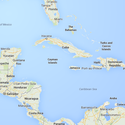-
About
- About Listly
- Community & Support
- Howto
- Chrome Extension
- Bookmarklet
- WordPress Plugin
- Listly Premium
- Privacy
- Terms
- DMCA Copyright
- © 2010-2024 Boomy Labs

 List Builder
List Builder
Listly by List Builder
Top Things to Do in Nagasaki, Japan, from a Cruise Ship - Feel free to add, vote or provide feedback to the list
The Nagasaki Atomic Bomb Museum is in the city of Nagasaki, Japan. The museum is a remembrance to the atomic bombing of the city that occurred on 9 August 1945, at 11:02:35 am. Next to the museum is the Nagasaki National Peace Memorial Hall for the Atomic Bomb Victims, built in 2003, which marks the hypocenter of the event.
Hashima Island , commonly called Gunkanjima (軍艦島; meaning Battleship Island ), is one among 505 uninhabited islands in Nagasaki Prefecture about 15 kilometers (9 miles) from Nagasaki itself. The island was populated from 1887 to 1974 as a coal mining facility. The island's most notable features are the abandoned and undisturbed concrete apartment buildings and the surrounding sea wall.
Mount Inasa is a hill to the west of Nagasaki which rises to a height of 333 metres (1,093 ft). The Nagasaki Ropeway allows visitors to travel to the top from Nagasaki. A short walk from the cable car station are several buildings that house transmitters for TV and radio stations that serve Nagasaki and the surrounding area.
Nagasaki Peace Park is a park located in Nagasaki, Japan, commemorating the atomic bombing of the city on August 9, 1945 during World War II. It is next to the Atomic Bomb Museum and near the Peace Memorial Hall.
The (国立長崎原爆死没者追悼平和祈念館 Nagasaki National Peace Memorial Hall for the Atomic Bomb Victims Kokuritsu Nagasaki Genbaku Shibotsusha Tsuitō Heiwa Kinenkan) is a commemorative monument in Nagasaki, Japan, situated next to its Atomic Bomb Museum. The Peace Park is nearby.
Glover Garden is a park in Nagasaki, Japan built for Thomas Blake Glover, a Scottish merchant who contributed to the modernization of Japan in shipbuilding, coal mining, and other fields. In it stands the Glover Residence, the oldest Western style house surviving in Japan and Nagasaki's foremost tourist attraction.
The Syusaku Endo Literature Museum is a museum located in the Sotome district in the northwestern part of the city of Nagasaki, and is dedicated to the life and work of Japanese novelist Shusaku Endo. Sotome is famed as the home of the hidden Christians and served as the scene for Endo's novel Silence.
Dejima , in old Western documents latinized as 'Decima', 'Desjima', 'Dezima', 'Disma', or 'Disima', was a small fan-shaped artificial island built in the bay of Nagasaki in 1634 by local merchants. This island, which was formed by digging a canal through a small peninsula, remained as the single place of direct trade and exchange between Japan and the outside world during the Edo period.
Meganebashi or Spectacles Bridge, over the Nakashima River (中島川) was built in Nagasaki in 1634 by the Japanese monk Mokusu of Kofukuji Temple. It is said to be the oldest stone arch bridge in Japan and has been designated as an Important Cultural Property.
Isahaya Park (also known as Azalea Park) is in Nagasaki Prefecture, Japan. It was built on the ruins of Isahaya castle (also known as Takashiro) during the Taishō period. The park is famous for its azalea blooms, and the "Azalea Festival" is held here, on and around April 10 every year.
Iōjima was a town located in Nishisonogi District, Nagasaki Prefecture, Japan. Iōjima was the only town on the island of Iōjima near Nagasaki City. The island includes beaches and an onsen.
The permanent exhibition features exhibits dealing with exchange with the Netherlands, China and Korea, and shows artifacts brought to Japan by foreign traders. It also focuses on " Nanban" (Portuguese and Spanish culture) and the introduction of Christianity.
The Twenty-six Martyrs of Japan were a group of Christians who were executed by crucifixion on February 5, 1597 at Nagasaki. Their martyrdom is especially significant in the history of Roman Catholicism in Japan.
Ōura Church is a Roman Catholic church in Nagasaki, Japan, built soon after the end of the Japanese government's Seclusion Policy in 1853. It is also known as the Church of the 26 Japanese Martyrs. It was for many years the only western-style building declared a national treasure, and is said to be the oldest church in Japan.
The atomic bomb that fell on Nagasaki on August 9, 1945 detonated in Urakami only 500 m (1640 ft) from the cathedral, completely destroying it. As Assumption of Mary (August 15) was near, Mass was held on the day and was well attended.
Sōfuku-ji is an Ōbaku Zen temple that was built by the Chinese monk Chaonian in 1629 as the family temple of the Chinese from Fujian Province who settled in Nagasaki.
Suwa Shrine (諏訪神社 suwa jinja) is the major Shinto shrine of Nagasaki, Japan, and home to the Nagasaki Kunchi ( kunchi (くんち) means " festival"). It is located in the northern part of the city, on the slopes of Mount Tamazono-san, and features a 277-step stone staircase leading up the mountain to the various buildings that comprise the shrine.
Shōfuku-ji is an Ōbaku Zen temple in Nagasaki, Nagasaki, Japan. Its honorary sangō prefix is Manjusan . It was founded by Tetsushin Dōhan, the grandson of Ingen, with support from Nagasaki bugyō and Chinese merchants, and construction was completed in 1677.
